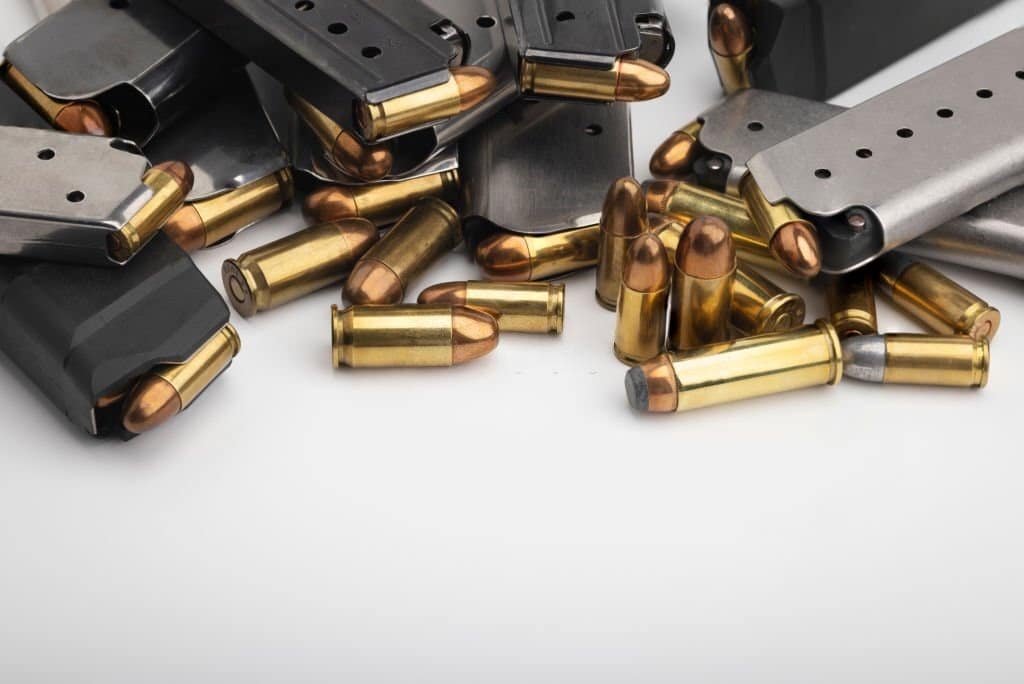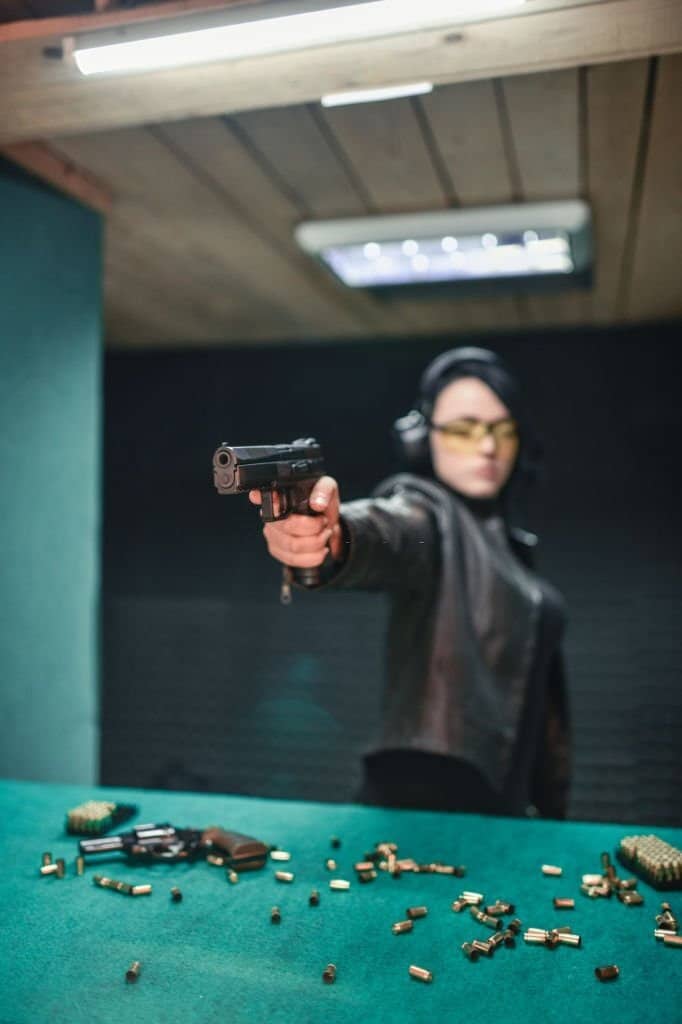What Is +P Ammo? Handgun owners who possess firearms for self-defense are always searching for the optimal combination of power, accuracy, ammunition capacity, and portability. In most cases, an increase in caliber increases the power of each shot, but at the sacrifice of other attributes.
The new age requirement for the Texas License to Carry – Texas Concealed Carry is now only 18 years old per Federal Court Ruling.
Firearms Policy Coalition, Inc. et. al., v. Steven McCraw, et. al., No. 4:21-cv-1245-P
A.40 S&W, for instance, is more powerful than 9mm, but it is also heavier, and you may need to lower the number of rounds in the magazine due to the greater cartridge capacity. +P ammunition is one of the innovations that allow you to enhance power without compromising other elements.

+P ammunition is a conventional pistol cartridge with slightly more gunpowder than standard ammunition for a specific firearm. This boosts the round’s effectiveness (hence the plus-P; the P is for power). Because the cartridges are the same size and dimensions as conventional ammunition, no additional gun modifications are necessary.
History Lesson
On April 11, 1986, two thieves robbed a bank in Miami. The FBI was searching for the two because they had previously committed the crime. Prior to their most recent crime, the couple had murdered or attempted to murder a number of innocent individuals, and the search was on for them. They attempted to flee when an FBI agent discovered them in a stolen vehicle outside a bank. After crashing, the robbers jumped out, loaded a Mini-14 with ammunition, and opened fire on the agents.
Many words have been written about the 5-minute gunfire that erupted, including the script for a made-for-TV movie starring Michael Gross (Stephen from Family Ties) and Jan Michael Vincent (Stringfellow Hawke, Airwolf), but the final FBI report on the incident was frustrating. The armed robber was struck in the chest with a 9mm round early in the confrontation, maybe within the first 30 seconds of gunfire. The bullet passed through the thief’s arm, chest, and lung before coming to rest half an inch from his heart. This would have been lethal without medical assistance, but because the robber’s heart was not damaged, he was able to continue fighting, eventually injuring five FBI agents and killing two.
This gunfight taught us, among other things, that the standard-issue 9mm pistol from 1986 was possibly inadequate for the task. The robber died, but not instantly, and the shot was most likely a fluke, but the perception that 9mm was ineffective caught on. Ammunition suppliers went back to the drawing board and came up with several new concepts. Similar to a Magnum round for automatics, the 10mm was one of these. Although agents reportedly disliked the bullet’s recoil, the FBI used it. In response, Smith & Wesson reduced their 10mm round into the.40 S&W, the Depeche Mode of available calibers. All of this was done to provide law enforcement a small authority advantage, which was believed to be lacking in Miami that day.
+P Ammo
In the meantime, 9mm ammunition makers (almost every manufacturer of handgun ammunition) were designing their own answer. Instead of reinventing the wheel and requiring everyone to purchase new weaponry to accommodate larger rounds, engineers experimented with adding the additional powder to standard 9mm cartridges. Metalworking and case design innovations allowed for the creation of an overpressure cartridge that would not crack under the additional stress of the +P load.
It didn’t take long for +P ammunition to become available in additional calibers once the 9mm cartridge proved so popular. In 2020, +P variations of these calibers are also prevalent.
- Roberts.257
- The Special.38
- .38 ACP
- .45 ACP
Each of these rounds notably benefits from the +P concept. The .38 Special +P — not to be confused with the.38 Super, which is the +P.38 ACP round — is a cartridge of intermediate power between the standard.38 Special and the .357 Magnum, which can be too powerful for short-barreled revolvers. The .257 Roberts +P bullet drives the projectile incredibly swiftly, resulting in an extremely flat trajectory and enhanced range accuracy. And the +P in the.45 ACP round causes the 230-grain bullet to travel faster than a frightened housecat, which is a pleasant change for 1911 shooters.
It’s not a precise science.
It is essential to remember that +P is a marketing term, not a technical one. Due to the absence of a controlling organization that judges what is +P and what is not, the enhanced power of these rounds is inconsistent. The Sporting Arms and Ammunition Manufacturers’ Institute (SAAMI), which tests consumer ammunition, reports that +P increases the power of a 9mm round by around 10 percent, whereas the.257 Roberts only gains 7.41 percent. The.45 ACP earns approximately 9.5% in +P, while the.38 Super gains a stunning 37.75% over the standard.38 ACP you purchased 25 years ago.
These outputs are by no means standardized, and when you move up to +P+ ammo, you’ll find an even greater variation on the high end. It’s important to note that +P ammo is almost usually weaker than Magnum ammo of the same caliber, and it has only approximately half the chamber pressure of the proof round that was fired through your rifle to verify it wouldn’t explode.
And regarding that…
Concerns regarding safety
It goes without saying that firearms make noise, and when the noise becomes too much for them, there may be a safety issue. It’s easy to exaggerate the dangers here, as nearly all current rifles (made after 1990 or thereabouts) can handle the +P version of any ammunition they fire. If you are unsure, examine the ammo rating printed on the barrel or the operator’s manual for a comprehensive list of the ammunition your rifle may safely fire.
The major risk of firing +P through an obsolete pistol is that it will explode in your face, as opposed to damaging the gun’s internals. When a cartridge is loaded into the chamber, the bullet’s nose heads toward the forcing cone, a metal ring. In the past, these were made of lighter steel, but now they are fairly durable. Consistently firing +P into the barrel of an older weapon may cause your forcing cone to bend due to the excessive pressure given to it. This eventually results in feed problems and may even clog the barrel. Don’t be afraid to ask a gunsmith to examine your weapon if you’re ever uncertain about what it can shoot.
What does the P mean in ammo?
Just means the ammo is loaded with more powder
What is the difference between +P and +P+ ammo?
+P and +P+ are SAAMI specifications for rounds loaded to higher than normal pressures.
These higher pressures result in greater projectile velocities (fps).
Are you ready to get your Texas License to Carry – Texas Concealed Handgun License? We are here to help you through the whole process.
When you’re ready to get your Texas License to Carry (LTC) or your Oklahoma SDA, make sure you choose a premier training provider. Conceal Carry Academy is committed to offering the best firearms training possible through the NRA or other State programs. When they need information on firearms safety or they want to take a Texas LTC class or Oklahoma SDA, gun owners trust the expertise of the pros from Conceal Carry Academy. If you have questions about any aspect of gun ownership in Texas, contact us today!


